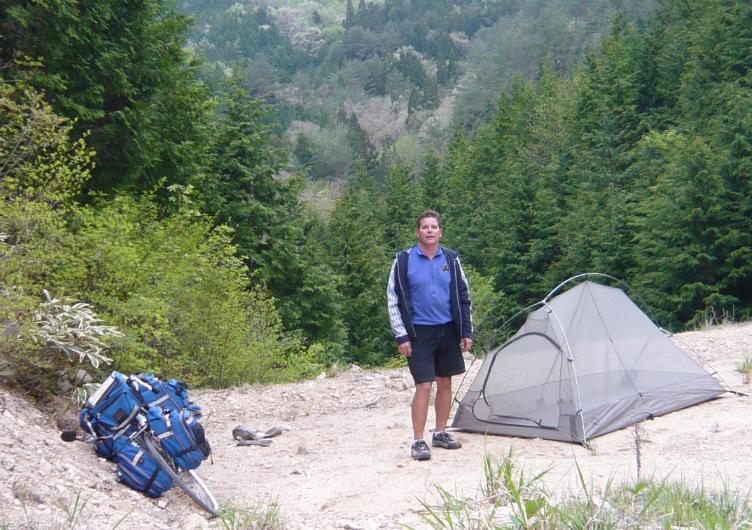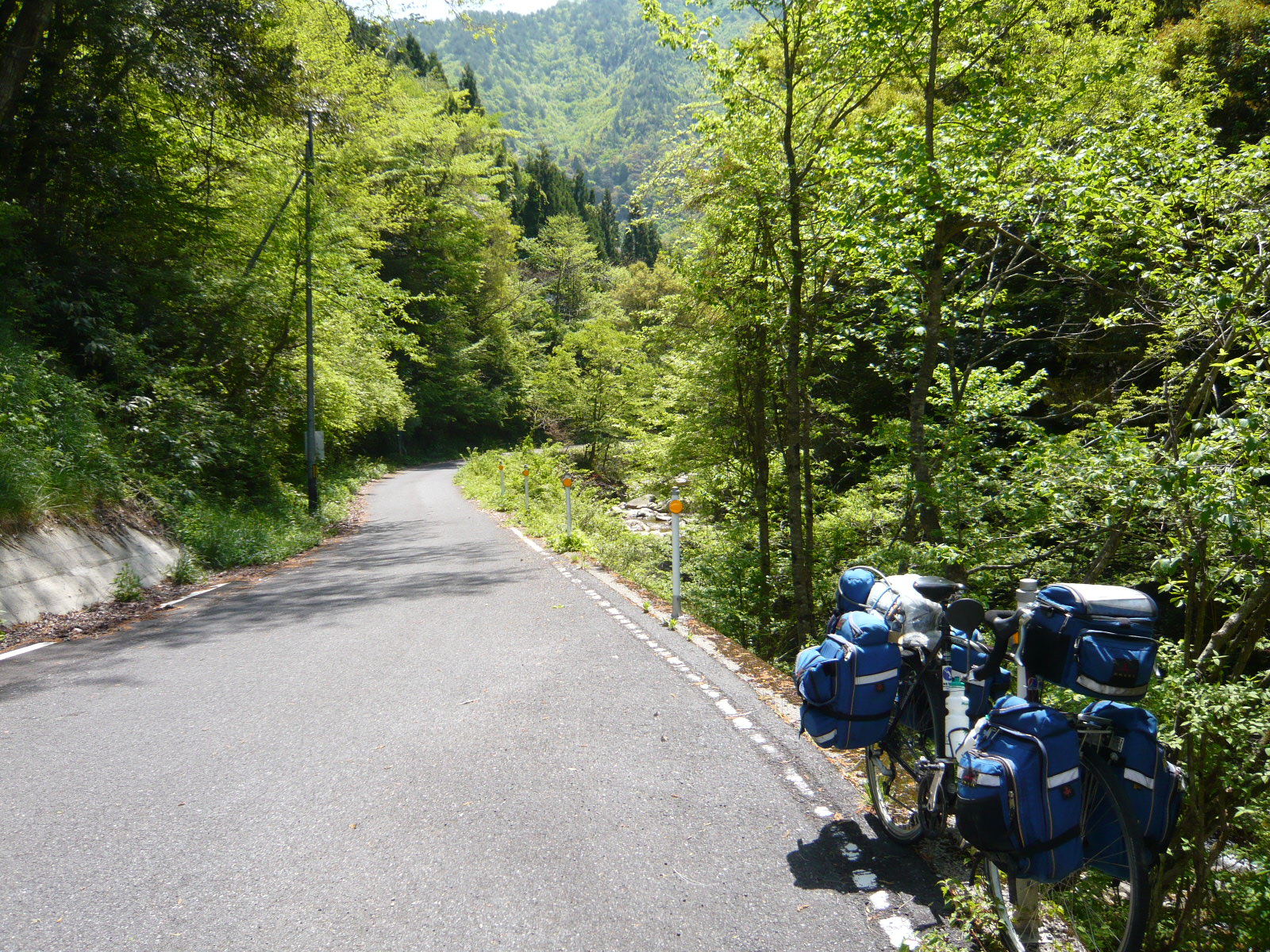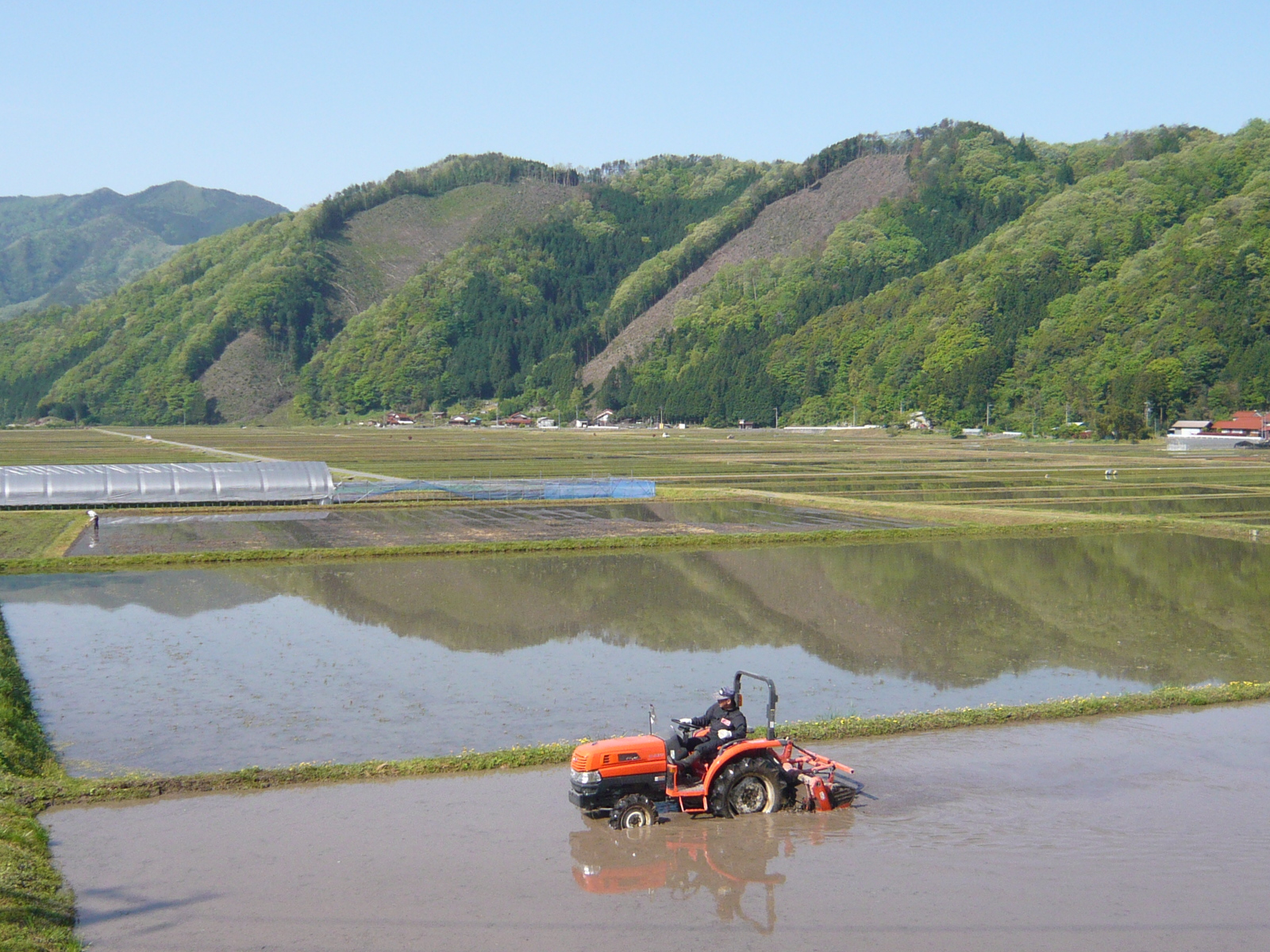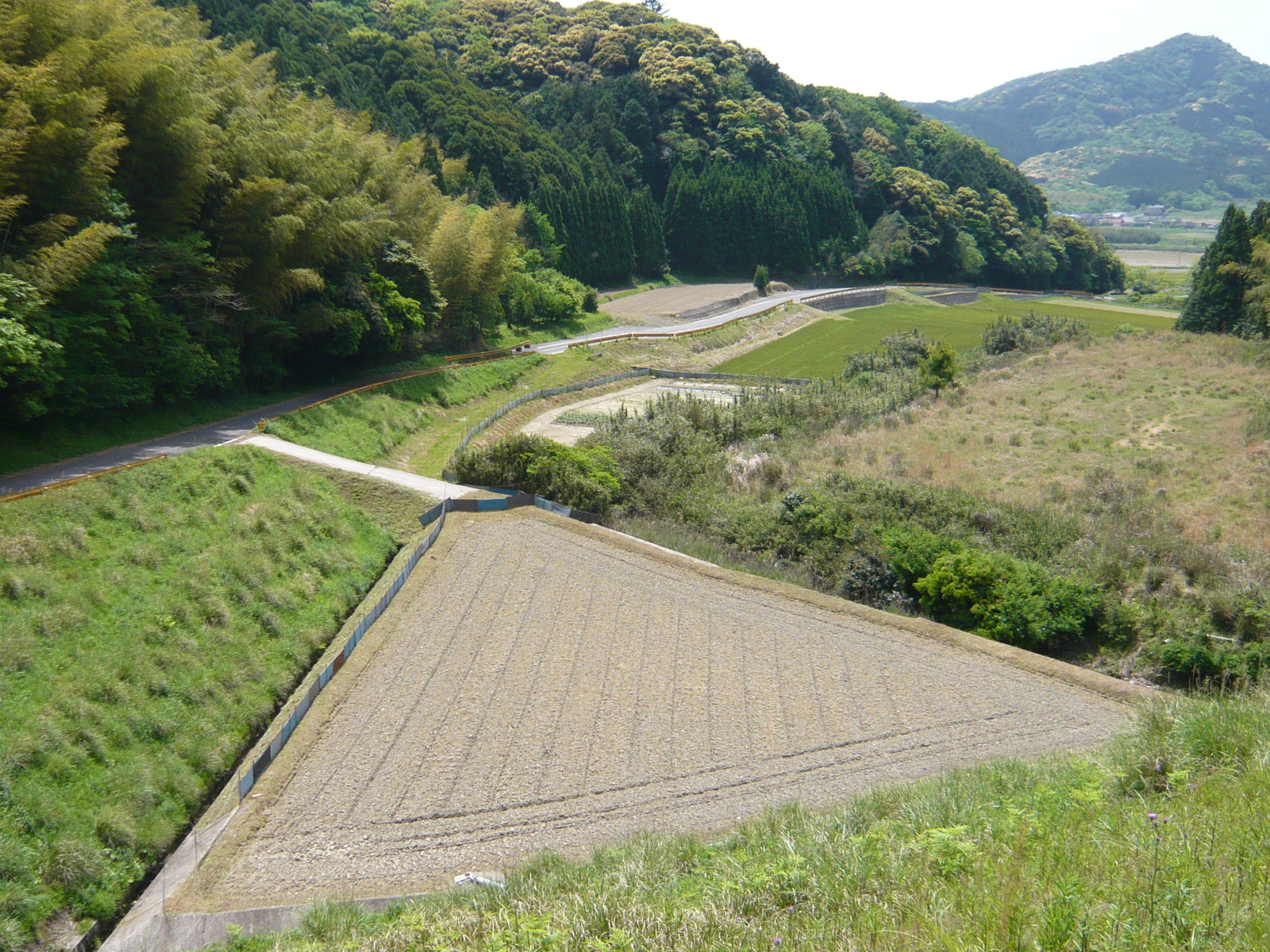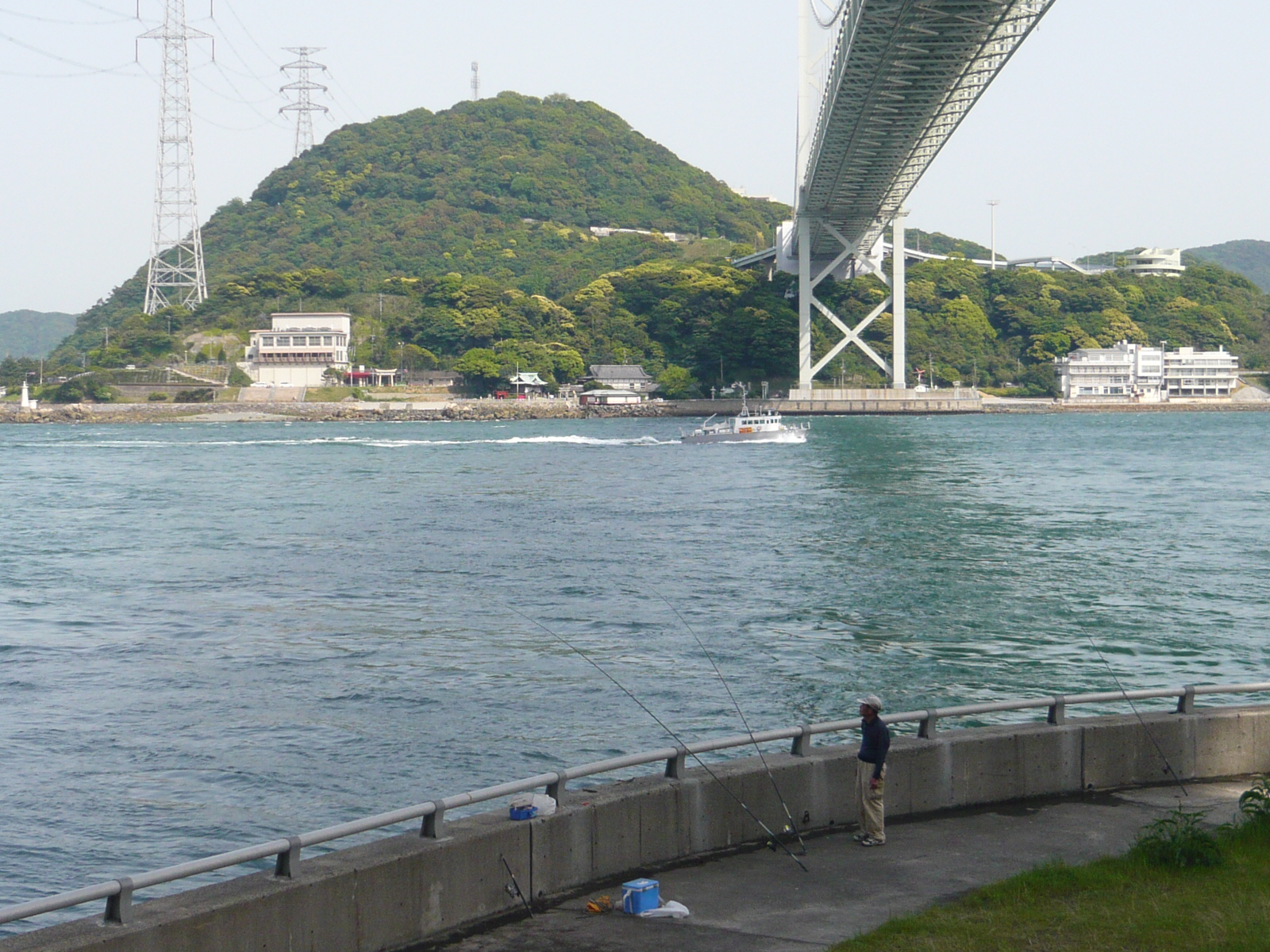News from Bolivia: Remember the world’s most dangerous road I biked down outside of La Paz? It has claimed a cyclist, among others:
http://news.bbc.co.uk/1/hi/uk/7366377.stm
In my last post I added a link to a reenactment of the Hiroshima atomic bomb blast. It is pretty amazing. In case you missed it, click here:
http://www.metacafe.com/watch/365652/hiroshima_atomic_bomb_reenactment/
Incidentally, the guy sitting on the steps who gets blown away was real. In the museum they have the actual front steps of the Sumitomo Bank where someone was sitting at 8:15 am. About 250 yards from the center of the blast, all that remained of him was his shadow left on the concrete.
My last day in Hiroshima I spent with two women I met, Reiko and Sayuri, who were kind enough to show me around the island of Miyajima, near Hiroshima. The island is home to the Itsukushima Shrine. The shrine dates back to the 6th century and has been in its present form since 1168.
Here is the famous entrance to the shrine, known as a torii. At high tide it appears to be floating on the water.
Some shots inside the shrine and the adjacent Buddhist temple. Note the gifts of canned fruit to keep the gods nourished. Canned pineapple?
There are something like 500 Buddhas lining these stairs.
A simple Shinto shrine. Note the water for washing up and the bowl for tossing in a 10 yen coin.
After the island we returned to central Hiroshima where the annual flower festival was taking place. Here is a street performer entertaining the passersby.
Here we are: me, Sayuri, and Reiko.
All these temples got me thinking about religion and how random it is. I happened to have been born into a Christian environment, but it could just have easily been Shinto, or Buddhist or Muslim. I was never given a choice about it. I think young people should be exposed to many religions and be allowed to choose for themselves, not be forced into one particular belief because their family or peers want them to. Any thoughts on that? Maybe I would have become a Buddhist. On second thought I would not want to shave my head.
Anyway, I did a bit of research to satisfy my curiosity about Shintoism and Buddhism. If you are curious too, then read on. If not you can skip the next section.
Shinto
Shinto is the native religion of Japan and coalesced around the 5th and 6th century as Buddhism was becoming more popular in Japan. Shinto teaches that everything contains a kami a “spiritual essence”. Every rock, every squirrel, every living and nonliving thing contains a kami.
Shinto has no binding set of dogma, no holiest place for worshippers, no person or kami deemed holiest, and no defined set of prayers. Instead, Shinto is a collection of rituals and methods meant to mediate the relations of living humans and kami. The afterlife is not a primary concern in Shinto; much more emphasis is placed on fitting into this world instead of preparing for the next.
The most immediately striking theme in the Shinto religion is a great love and reverence for Nature in all its forms and for natural artifacts and processes. Thus, a waterfall, the moon, or just an oddly shaped rock might come to be regarded as a kami; so might charismatic persons or more abstract entities like growth and fertility.
Buddhism
Buddhism came to Japan around the 5th century, probably from Korea or China. The basics of Japanese Buddhism revolve around the Four Noble Truths:
1. Life is suffering. This comes from the Sanskrit word duhkha, which can also be translated as imperfect, stressful, or filled with anguish. Contributing to the anguish is the fact that all things are impermanent, including living things like ourselves. Furthermore, there is the concept of anatman — literally, “no soul”. Anatman means that all things are interconnected and interdependent, so that no thing — including ourselves — has a separate existence.
2. Suffering is due to attachment. Attachment is a common translation for the word trishna, which literally means thirst and is also translated as desire, clinging, greed, craving, or lust. Because we and the world are imperfect, we are forever “clinging” to things, each other, and ourselves, in a mistaken effort at permanence. Besides trishna, there is dvesha, which means avoidance or hatred. Hatred is its own kind of clinging. And finally there is avidya, ignorance or the refusal to see. Not fully understanding the impermanence of things is what leads us to cling in the first place.
3. Attachment can be overcome. Perhaps the most misunderstood term in Buddhism is the one which refers to the overcoming of attachment: nirvana. It literally means “blowing out,” but is often thought to refer to either a Buddhist heaven or complete nothingness. Actually, it refers to the letting go of clinging, hatred, and ignorance, and the full acceptance of imperfection, impermanence, and interconnectedness.
4. There is a path for accomplishing this. The path is called dharma. Buddha called it the middle way, which is understood as meaning the middle way between such competing philosophies as materialism and idealism, or hedonism and asceticism. This path, this middle way, is elaborated as the eightfold path.
The Eightfold Path
1. Right view is the true understanding of the four noble truths.
2. Right aspiration is the true desire to free oneself from attachment, ignorance, and hatefulness.
3. Right speech involves abstaining from lying, gossiping, or hurtful talk.
4. Right action involves abstaining from hurtful behaviors, such as killing, stealing, and careless sex.
5. Right livelihood means making your living in such a way as to avoid dishonesty and hurting others, including animals.
6. Right effort is a matter of exerting oneself in regards to the content of one’s mind: Bad qualities should be abandoned and prevented from arising again; Good qualities should be enacted and nurtured.
7. Right mindfulness is the focusing of one’s attention on one’s body, feelings, thoughts, and consciousness in such a way as to overcome craving, hatred, and ignorance.
8. Right concentration is meditating in such a way as to progressively realize a true understanding of imperfection, impermanence, and non-separateness.
Now you see why Buddhists sit and meditate a lot.
OK, enough of that for now. I’ll get back to religion when I am in China.
I finally was able to ride again and the 250 km from Hiroshima to Shimonoseki were some of the most peaceful I have ever ridden. Almost all roads are paved in Japan, even the tiny ones out in the middle of nowhere. So some great cycling: sunny and warm, no cars, and nice views.
Here is my campsite one night.
A quiet road in the mountains.
I passed hundreds of these watery fields. They are for growing rice I think. Here is a farmer churning up the mud and preparing it for the rice seedlings.
A view from on high.
Finally the end of the road, Shimonoseki. This is western Honshu (the main island of Japan) looking at the island of Kyushu over the Kanmon Straits. Over a thousand ships a day sail through this narrow waterway, making it one of Asia’s busiest maritime crossroads.
